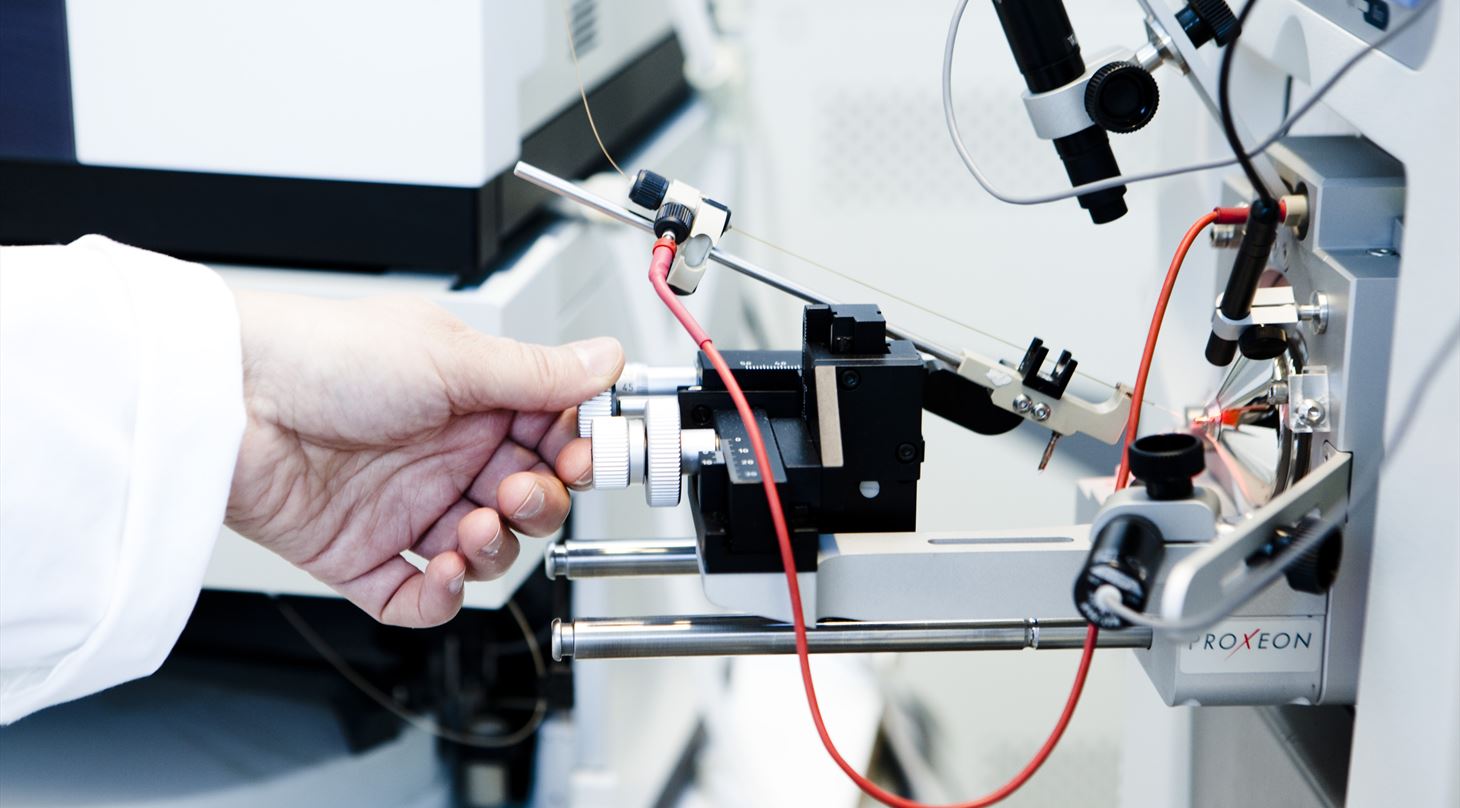
Medical Biotechnology - Mass spectrometry-based proteomics
Select Page

Danish Technological Institute (DTI) has an established proteomics facility for high-resolution mass spectrometry-based proteomics. Research projects, commercial assignments and analytical services are routinely carried out in collaboration with universities and industrial partners.
How can Danish Technological Institute help you?
We have comprehensive experience within mass spectrometry-based proteomics, and would be pleased to participate in research and development projects, nationally as well as internationally.
We can offer:
- Quantitative proteomics using isobaric labelling, e.g., iTRAQ, TMT, AQUA
- Label-free quantitative nLC-MS/MS analysis
- Protein identification and characterisation (simple and complex samples)
- Analytical characterisation of biologics, e.g., characterisation of biosimilars, intact mass measurement and evaluation of batch variability
- Determine compound-protein interactions (targets and off-targets) by chemical proteomics
- Identification of post-translational modifications, PTMs, e.g., phosphorylation
- Biomarker discovery, characterisation and validation, e.g., for companion diagnostics
- Development, validation and optimisation of bioanalytical methods according to EMA and FDA guidelines
Project cases
“Natural products from MARINE FUNGI for the treatment of cancer”
“Clinical development of enzyme replacement therapy in alpha-Mannosidosis patients using recombinant human enzyme”
”Nye lægemidler uden bivirkninger – Mode of action by chemical proteomics”
“Cleaved cerebrospinal fluid proteins as early biomarkers for detection of Parkinson’s disease”